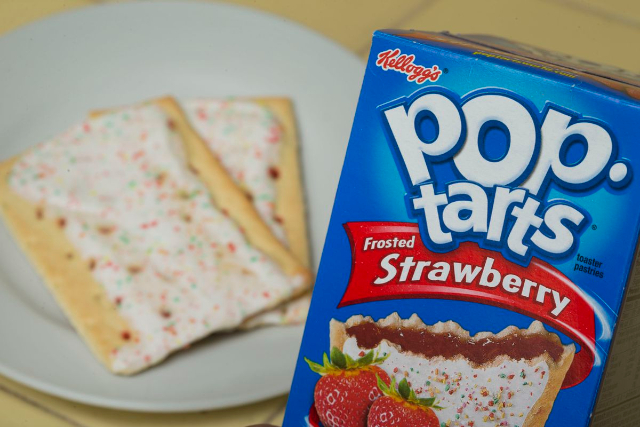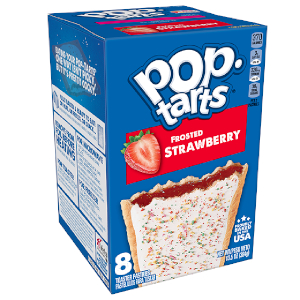Remember the hoop-la over one woman’s lawsuit against Canada Dry, when she discovered that the brand’s iconic Ginger Ale had only a token amount of real ginger? The problem was, Canada Dry boasted on its labels that the soda was ‘Made With Real Ginger’…
 False and misleading advertising? Only 2 percent Strawberries..
False and misleading advertising? Only 2 percent Strawberries..
Canada Dry, in fact, ran a high-saturation advertising campaign leaning heavily on the claim that it used real ginger. But, while the words on the can weren’t technically a lie, they were an ethical disgrace – a classic example of including a trace of the real stuff while packing the product with artificial flavouring, just so Canada Dry could claim its Ginger Ale ‘Was Made With Real Ginger’.
I had thought that such tactics were a thing of the past. I mean, there was a whole series of such lawsuits and exposées decades ago that should have put food-manufacturers on notice. But I guess not. The Canada Dry scandal put me in a pensive state, and I began wondering how widespread that deceptive practice was in the industry.
In an era when food manufacturers are scrambling to make ‘healthy’ claims for their products – reducing salt, fat, added sugar and eliminating artificial colours, flavours and preservatives – I was frankly amazed that a high-profile, heritage brand like Canada Dry would engage in such shady practices.
The pressure to maintain profits
Back when corporations were encouraged to publish ‘mission statements’, virtually all of them proudly stated that one of their top commitments was to ‘optimize value and profits for our shareholders’. It followed from that, at least in my mind, that profits took precedence over morals and ethics, and respect for the customers, and respect for the truth.
It’s been demonstrated time and again that business managers and strategists (some, at least) will approve any action that passes the ‘technically legal’ test if it will boost sales or elevate the brand’s image.
“We made a full disclosure on the package!” the marketing guys will protest. The legally required words may be there, but they’re usually present in the smallest print you’ll ever try to read, way at the bottom of the label. The marketing guys may have no ethics, but they still, apparently, retain the capacity to feel shame. That, or they just don’t want anybody to read them. Ya think?
The Pop Tarts case
Now, Kellogg’s is being sued by a woman under the Illinois Consumer Fraud and Deceptive Business Practices Act over the amount of strawberries in the filling of their Strawberry Pop Tarts. The classic ‘breakfast pie’ does have real strawberries in it. But only a bout 2 percent, it turns out – coincidentally, the same amount of real ginger in Canada Dry’s disputed beverage.
The $5 million class action suit claims, in part, that Kellogg’s labelling and advertising give the impression that the strawberry filling contains, “a greater relative and absolute amount of strawberries than it does.” Not only that but, “Whether a toaster pastry contains only strawberries or merely some strawberries, is basic front label information consumers rely on when making quick decisions at the grocery store.”
The Canada Dry Case is bound to be cited as a precedent.
My worst fears confirmed
I now wonder even more about how much – more precisely, how little – real food is used in a whole galaxy of consumer products – specifically, in the recently demonized processed and heavily processed foods. Another, almost hidden reason to suspect them and avoid them.
How did our modern, developed world, with all its technological advances, come to this moral, ethical and grossly unhealthy impasse? The secret is, people care more about price and convenience than they do about their own or their own and their families’ health and well being. If they expected the government to protect them from unscrupulous, profit-scraping manufacturers, they were naive.
There’s only one way to escape the deception and the health consequences. It’s time to step up and work towards practicing the almost-universal official dietary recommendations calling for half of every plate to be filled with fresh fruits and veggies, a quarter with lean protein and a quarter with whole grain products.
~ Maggie J.

